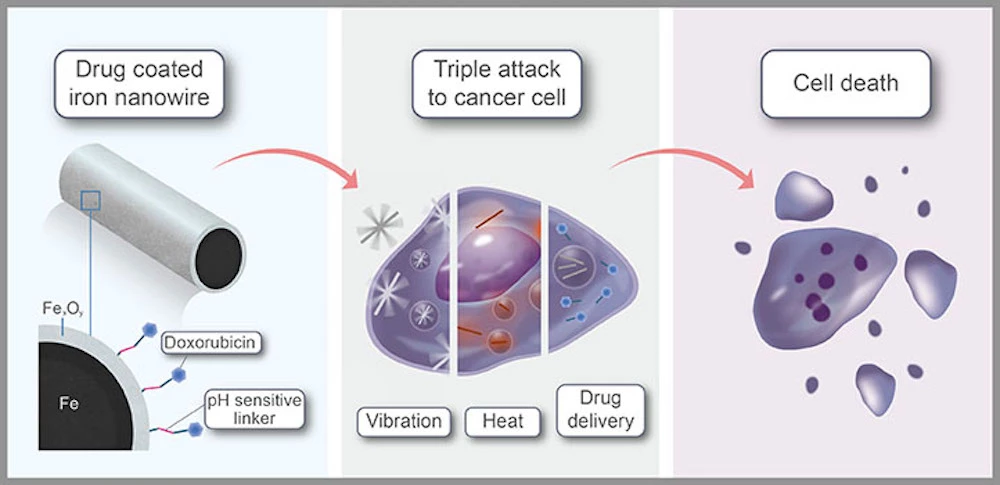Cancer is difficult to treat, not least because there are so many different types of it, and as such scientists are coming up with some creative new methods to fight the disease. Now, a new study has found that iron nanowires could deliver a three-pronged attack against cancer cells, using heat, vibrations and drugs together.
The nanowires measure just 30 to 40 nanometers thick, and are made of an iron core wrapped in an iron oxide shell. The idea is that these could be inserted into a tumor, and then induced to attack the cancer cells in a combination of ways.
By exposing the wires to a low-power magnetic field, they begin to vibrate, which physically tears open the walls of the targeted cells. If hit with near-infrared light from a laser, the wires will warm up, delivering a lethal dose of heat directly to the cells.
And thirdly, the team coated the outside of the nanowires in an anticancer drug called doxorubicin. These drug molecules were connected with linkers that are sensitive to pH changes, so that they dissolve only in cancer cells, which are generally more acidic than healthy cells. That means the drugs will only be delivered where they’re needed.

The team tested this technique on lab-grown tumors, and found that the nanowires were able to wipe out about 90 percent of the cancer cells. That makes this triple threat much more effective than any of the methods alone. Plus, it should minimize side effects to healthy cells, due to the targeted nature of the treatment.
The team says that the key to this success lies in making the wires out of iron. That’s because the metal can be easily heated and affected by magnetic fields, enabling the first two prongs of attack. And perhaps most importantly, it’s already approved as safe for use in humans, being a vital and native mineral in the body.
“Taken together, the capabilities of iron-based nanomaterials make them very promising for the creation of biomedical nanorobots, which could revolutionize healthcare,” says Jürgen Kosel, lead researcher on the study. “While this might seem futuristic, the developments are well on their way.”
The study was conducted by researchers at King Abdullah University of Science and technology (KAUST) and CIC biomaGUNE. The research was published in the journal ACS Applied Materials & Interfaces.
Source: KAUST




